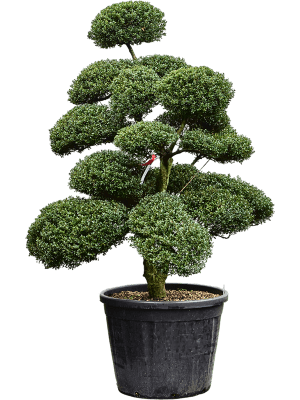Origin
The Taxus cuspidata, also known as the Japanese yew, originates from Japan, Korea, the Russian Far East and China. This plant can easily adapt to various types of climates and soils, which contributes to its expansive distribution across different regions.
Characteristics
The Taxus cuspidata is a slow-growing, evergreen shrub that can grow up to 12 meters high. It is distinguishable by its elongated, leathery, dark green needles and bright red, berry-like cones. The plant is dioecious, which means there are male and female plants. In the early spring, the Taxus cuspidata produces small cones, while the female plants yield ripe, bright red berries by autumn.
Care
The Taxus cuspidata requires minimal care and can grow in both a sunny and a shady environment. Although the plant is tolerable towards a variety of soil types, it thrives the best in a well-drained, moist soil. The plant can be pruned effectively, making it popular for hedges and topiary art. However, caution should be taken while pruning, as the plant grows slowly and it can take some time for it to recover from a harsh trimming.
